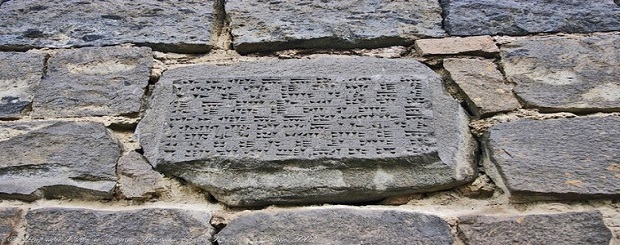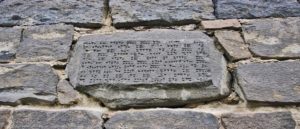
How To Identify Falsifiers Of The History Of Armenia, Or the questions that those who deny the identity of Urartu
March 1, 2021 – News
How to identify the falsifiers of the history of Armenia? Or the questions that those who deny the identity of Urartu and Armenia are obliged to answer.
This article points out the grossest omissions of all those who claim that Urartu is not an Armenian state – from a scientific point of view. It will showcase a number of questions that such authors should have answered before coming to the conclusion that Urartu is not Armenia.
But such authors did not even consider the questions posed. Thus, all statements of this nature should be considered fiction until these questions are studied in detail by science.
The father of Armenian historiography, 5th-century author Movses Khorenatsi, in his “History of Armenia” set out the genealogy of Armenians from times immemorial – a thousand years before the emergence of “Urartu”, i.e. from pre-biblical times. At the same time, Khorenatsi had no idea about Urartu.
More detailed information is given by outstanding theologian and historian Mikael Chamchyan (1738-1823), a member of the (Catholic) Mkhitarist Congregation. A special place in his work is occupied by the three-volume essay “History of Armenia from the beginning of the universe to 1784 anno Domini”. When writing his work, M. Chamchyan relied on not only Greco-Roman sources but also numerous memorable records available in Armenian medieval manuscripts.
Note that according to M. Chamchyan, “no nation has such reliable information about its origin and early period of its history as the Armenians”.
By the way, it is very important to emphasize that Chamchyan was a member of the Catholic congregation, meaning that his works were reviewed or censored by the Catholic Church. In its turn, the Catholic Church can in no way be accused of conniving at the publication of incorrect historical information.
In this case, it is especially interesting that Chamchyan also did not have the slightest idea about Urartu. At the same time, he was sure that his information about the Armenians in the early period was reliable.
Armenia and Armenians are mentioned long before biblical times – in the times of Abraham and Moses. According to modern science, the Sumerians were the first to mention a state (Aratta, 4th-3rd millennium BC) in the Armenian Highlands. The next state formation, Armanum, is mentioned in Akkadian inscriptions. However, let us leave aside these ancient references and move on to the later and more detailed studied countries.
It turns out that in about the same territory, there first was Hayasa (Hittite sources of the middle of the 2nd millennium BC), then the Ararat kingdom (“Old Testament”), then Armenia. Moreover, “Hay” is the self-name of the Armenians, and the “Ararat kingdom” has always meant “Armenia”.
n Assyrian sources, the Ararat kingdom is called Urartu, and the famous rock of Darius (the Behistun Inscription of the 5th century BC) simply indicates that Armenia and Urartu are one and the same.
That is, all these countries are one and same Armenia. Everything fits perfectly with the “stories” of Khorenatsi and Chamchyan!
But a problem arises due to the fact that in the stone inscriptions made in Assyrian cuneiform, only part of the words can be read in Armenian, while the rest is attributed (by some scholars) to the Hurrian language (used in the state of Mitanni, neighboring Urartu).
And what are some “scientists” doing? They cross out all Armenian historiography, then declare that the Urarts have nothing to do with the Armenians.
Let’s first see if there is a reason for the latter statement.
Today, some Persian scholars claim that they freely read the “Urartian” cuneiform scriptures in Armenian, which are currently located in Iran. Additionally, many Urartian texts are now re-read by scholars in modern Armenia using Old Armenian.
From the around 600 known cuneiform tablets, about 350-400 root words can be pinpointed. Supporters of the deletion of the Armenian factor (from Urartu) attributed most of these words to the Urartian (Hurrian), and some are considered to be borrowed from other languages. However, as early as 1980, the Armenian language shared more than 70 root words with the Urartian language.
Even if we assume that the Urartian and Armenian languages were different, we need to calculate the degree of this difference before making statements. I would give a special place in this question to the ideas of A. Musheghian, who extremely scrupulously analyzes everything he researches.
He noticed that if you replace the sign “b” in “Urartian” with “v” (standard, well-known transition), then many “Urartian” words are perfectly readable in Armenian. He gives a striking example, analyzing a certain Urartian inscription, which was previously translated from “Urartian-Hurrian” as: “The king ate grapes with his wife… shot (from a bow) through seven gardens”.
Well, is it conceivable that the king ordered to carve such information in stone!? Translating the same text using Armenian, Musheghian gives the following translation: “The king, in the presence of his commanders, fired a shot, and the arrow passed… (a measure of length is indicated here)”. The king, of course, could have ordered such a text to be carved in stone – after all, the text indicates that the king, in the presence of witnesses, did something unordinary. That’s how powerful he was!
Thus, the modern counting of words-roots, common in “Urartian-Hurrian” and Armenian, becomes a priority. Without such a calculation, it is impossible to assert that the “Urartian-Hurrian” parts ways with Armenian.
In case it turns out that discrepancies between the “Urartian-Hurrian” and Armenian indeed exist, Musheghian put forward a very interesting assumption.
Who said that the records on the stones (mainly indicating that the king conquered someone and captured someone) were not deliberately made in “Urartian-Hurrian” to intimidate the Hurrian conquerors from neighboring Mitanni? Indeed, it’s unlikely that the notes on the stones were made for the local literate people (of whom there were very few).
Or, who said that “Urartian-Hurrian” was not the language of international communication in the territory of “Urartu”? Similar languages of international communication are widely known in history – Sumerian, then Akkadian, then Aramaic in antiquity, and Latin in medieval Europe
For example, for some time, the nobility in England and Russia used French, and the nobility in Armenia used Persian. English was common in the British colonies, and Russian was in the USSR and even now in post-Soviet countries.
According to Musheghian’s apt remark, if you carry out excavations through the millennia in many of the noted countries, you can come to completely wrong conclusions. For example, in Soviet times, there were more books in Russian in the Soviet republics than in the languages of local nationalities. If we follow the above logic, the conclusion will be unambiguous (and incorrect) – Russians were dominant in all the republics.
Let’s summarize. From the above, it clearly follows that everyone who still adheres to the point of view that Urartu and Armenia are different simply must (from a scientific point of view) prove:
1. That the History of Armenia described by Khorenatsi and Chamchyan is incorrect;
2. That the share of Armenian words in “Urartian-Hurrian” is insignificant, even with the above-mentioned transitions “b” – “v” and the like;
3. That “Urartian-Hurrian” was not the language of international communication on the territory of “Urartu”.
4. That “Urartian-Hurrian” was not used specifically to intimidate the Hurrian conquerors.
For any person of science (not necessarily a historian), it should be obvious that the absence of any such evidence testifies to the unfoundedness of the assertion that Urartu and Armenia are not the same.
We emphasize that at the moment, none of the points noted has been proven – moreover, they have not even been considered (although, logically, these issues should have been considered first of all, and without considering them, no one had the right to draw a conclusion that Urartu is not Armenia).
The dirty methods of falsifiers
Open “Wikipedia” and see how vicious some authors are, subjecting any mention of Armenia next to Urartu to mocking attacks. The same goes for some historians. For example, Diakonoff characterizes the supporters of the “Hayasa” hypothesis as mentally ill (although he does not consider any of the above questions).
Nothing to say – a very scientific argument!
Another modern Russian historian V. A. Shnirelman writes: “… shocked by the Armenian Genocide of 1915, Armenian authors began to prove that… the first state in the Lake Van region was founded by the Armenians”.
Moreover, he writes this not in some Internet commentaries (this would be comparatively fine), but in his “scientific” book. This is already multi-layered mud turned into “science”!
Firstly, he says that the Armenians have factually gone mad from pain and through this mockery indicates that these mad Armenians as if began to invent something. Needless to say, quite scientific arguments!
Bravo to the scientist Shnirelman! I wonder how the Jew Shnirelman would like it if someone wrote: “The Jews, who were shocked by the Holocaust, began to invent something!?”
It is interesting how the falsifiers deal with the whole History of Armenia. This is fantastic! They just need to declare that “the mythological versions of Armenian ethnogenesis are rejected by modern science” (the phrase is taken from the “The Formation of the Armenian Nation” by Russell J., University of Los Angeles, “The Armenian People from Ancient to Modern Times”, New York, St. Martin’s Press, 2004, pages 19-36).
Great! He stated that his unproven phrase is “modern science”. Then, he announced the history of Armenia as a mythological version of events, and that was it. History was erased from the face of the earth! Yes, Russell is brilliant, no objections! Almost a god! I erased the history of an entire nation with one phrase!
No, gentlemen! You cannot cross out the history of an entire nation with one phrase! Most likely, you yourself will soon face the judgment of history!
Obviously, you will not give intelligible answers to any of the above questions. You also won’t answer one simple question – how have you declared and are still declaring that Urartu is not the same as Armenia without considering the above questions (which any scientist was simply obliged to consider before making such a statement)? What kind of scientists are you after that!? The lack of an answer will be vivid and documentary evidence of your malice and falsification.
Meanwhile, we already know how you will act in the future – you will replicate your lies and suppress any scientific arguments. This is so typical of the modern, big-money world of historical science, the world of bribery, lies, and grant-eating.
Grigor Barseghyan

allinnet.info/news/how-to-identify-falsifiers-of-the-history-of-armenia/
